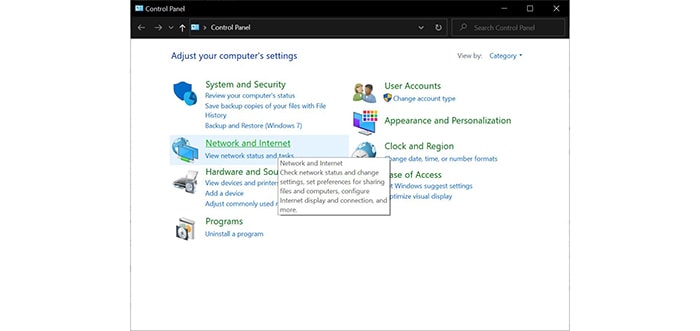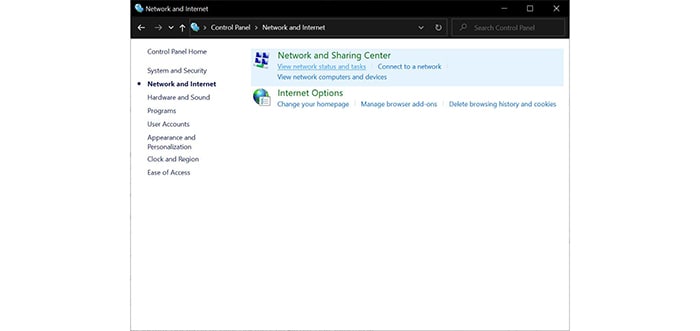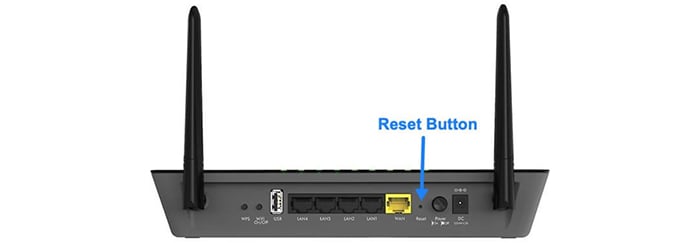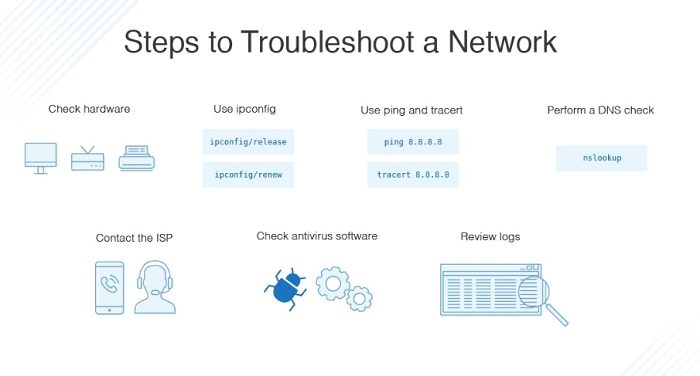Logging in to your home router requires an IP address because every router typically uses an IP address to log in. Some routers can easily be accessed using the name; all routers can be accessed through their IP address. IP addresses are typically a series of four sets of numbers separated by a dot. For example, the IP address 192.168.1.99
Every device connected to the Internet possesses an IP address so that the Internet can identify the device’s location and send the packets of information to the correct device.
There are two types of IP addresses, private IP addresses, and public IP addresses. The router uses public IP addresses to send and receive data packets from the Internet, whereas private IP addresses are private to the router and home address. All the information sent and received is via the router’s public address; the router then sends this packet of information to the devices.
See Also: 192.168.2.1 Admin Login, Password, and IP [Complete Guide]
Contents
How To Find Your Router’s IP Address?
If you want to find your router’s IP address, 192.168.1.99, in Windows, you can use the ipconfig command. But if you are not sure what the ipconfig command means, don’t worry. We have another method as well.
- Go to the search bar and type “Control Panel.”
- Open the control panel and then search for the option “Network and Internet.”
- Click on the option.
- Then click on “View network and tasks.”
- Tap on the name of your network settings whose IP address you want to find.
- You will see the option of “Ethernet” in blue ink. Click on the Ethernet.
- Then search for the details, or you can also view the properties.
- All the details will be visible on your screen. Your IP address will also be mentioned there.
- An IP address is the same as Default Gateway. Next to Default Gateway, you will find a series of numbers. That is the IP address of your router.
See Also: 192.168.11.1 IP Address, Username, and Password
How To Login To 192.168.1.99?
Once you have your IP address, and if it is 192.168.1.99, logging in becomes super simple.
- All you have to do is bring any device connected to the Internet and connect the device to a fast network where the Internet connection is stable.
- Next, open a browser, and on its search bar, type http://192.168.1.99
- When you enter the IP address and click on the go, it will redirect the page to the router’s login page.
- Enter your credentials (username and password) correctly and hit the login button.
- You will be logged in to the homepage of the router admin page.
- When you’re done logging in, you can make all the changes.
See Also: 192.168.178.1 Admin Login, Password, And IP [Complete Guide]
How to Login if You Forget Your Password?
Most people never change their password, but if you have changed it in the past, you need to log in to 192.168.1.99 using the new password. The new combination is in the router’s interface, and using the old password won’t help. But if you don’t remember the password, then the only option left for you is to reset the router.
Before proceeding with this process, ensure you have a secondary internet connection because resetting the router will reset all its previous settings. You will have to configure it again.
You can use a toothpick or the sim ejector pin to reset the router. The reset button is a small hole-like button on the router. Insert the toothpick in the reset button and continuously hold it for 20 to 30 seconds. The router will go off and start again. Once it starts, your router is reset.
You can log in to 192.168.1.99 using the default username and password. To know the username and password, check for the base and back of the router; it is always mentioned on the router. Enter all the details carefully using the default username and password, and you can log back in.
See Also: Everything About Netgear Router Login [Updated 2019]
Troubleshooting Common Router Errors
Rebooting the router is a simple step; one should try it before looking for any other answer.
For rebooting the router, plug out all the cables and wires moving in and out of the router. Keep it for some time, and then plug it back. Make sure you do not plug in different cables at different places. Make a note of where we need to plugin which cable.
Look for any loose connections and damaged cables. While plugging the cables, make sure the position of the cables is correct. You should hear a click sound to ensure they are correctly plugged in. Loosely plugging in may interrupt the connection, and you cannot connect to the internet.
One should keep the router’s antenna vertically upwards and not in any other position, as this may interrupt the connection.
Overheating and overloading also cause a lot of interruptions in the connection or trouble logging into 192.168.1.99. Downloading large chunks of the file may cause overloading, and the continuous use of the router for long hours may cause it to overheat. The router’s position also makes a lot of difference. One should keep it in a properly aerated space with no ventilation issues, and the vents should not have blockage. This may cause severe damage to the router. Check the router; if it is too hot, switch it off for some time and then start it again afresh.
See Also: Asus Router Port Forwarding Guide | EASILY EXPLAINED
Famous Brands using 192.168.1.99 as their login IP address:
Linksys is the only router brand with 192.168.1.99 as its login IP address.
FAQs
How to change the 192.168 8.1 Wi-Fi login details?
Enter 192.168.8.1, followed by the login password in the search bar to open the CPE management page. Enter the old, current, and confirmation passwords under Advanced, Modify Password before hitting Save.
Can we access Wi-Fi without entering a password?
Yes, Go to Network & Internet under Settings. After choosing Wi-Fi, move your cursor over the Add Network row's right side until you see the QR scan icon. However, a QR Code Scanner is present in view. While using your phone as the configurator, you can scan every device using a Wi-Fi QR code.
How to alter the password and router name?
You must know your router's details (mostly admin/admin or admin/password) to change them. Utilizing the existing username and password, access the admin section of your router, and search for security options. There should be a choice to alter the current login details and the router name.
What is my local IP address?
Every connected device, including itself, receives a local IP address from your router. Hence, it solely operates on your local network and is not linked to the global internet. The majority of routers only allot IP addresses that begin with 192.168.
What is a WPS PIN?
Your wireless router (Wi-Fi) uses a WPS pin, also known as a Wi-Fi Protected Setup pin, an 8-digit string of letters and numbers, to encrypt and secure your home network. It looks like a password on the back or bottom of every router.
Conclusion
Your 192.168.1.99 IP address is the gateway to your network, so once you log in using your default username and password, you should better change it to a personal password that no one can easily guess. Or else anyone can access your home network settings which can create havoc in your home router and may even misuse it. If you continue using the default password, you may compromise your security. The purpose remains to access many similar IP addresses like 192.168.10.1 and 192.168.0.101.
See Also: What Is PathPing | How to Use PathPing
You can always find me with a cup of coffee Googling anything and everything related to the networking. Refer to our detailed How-To Guides on wifi routers and never face any issue with router again!




